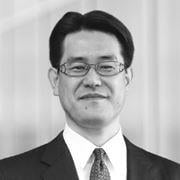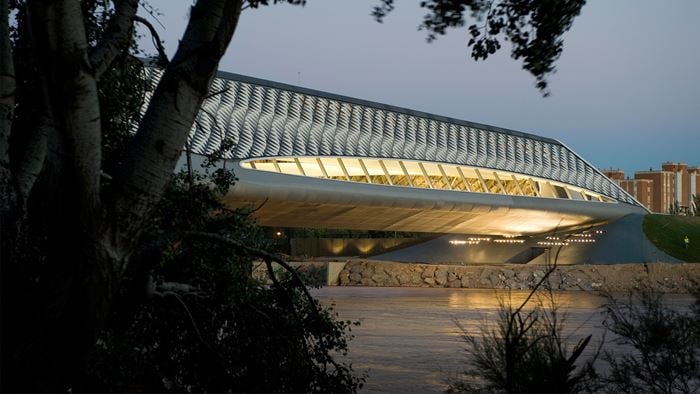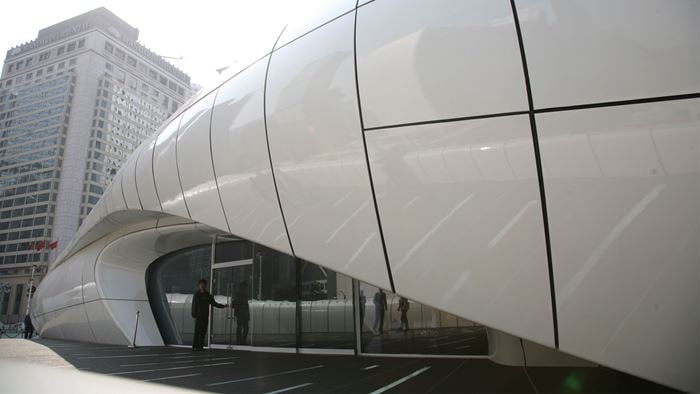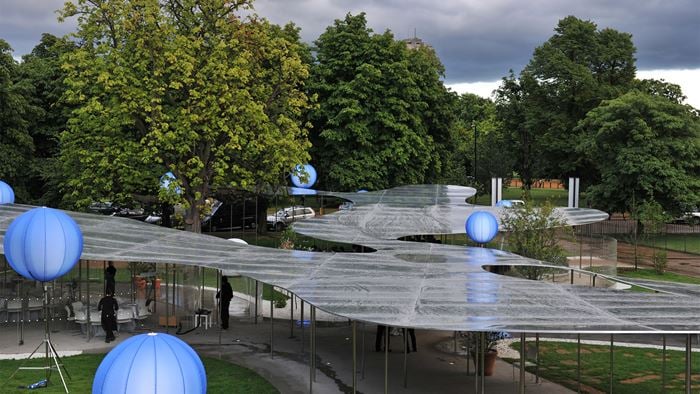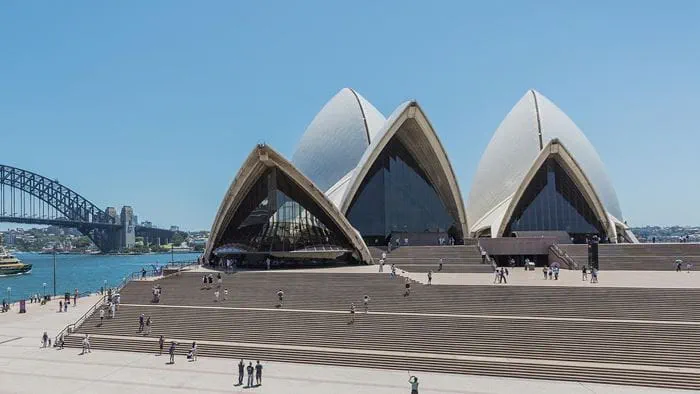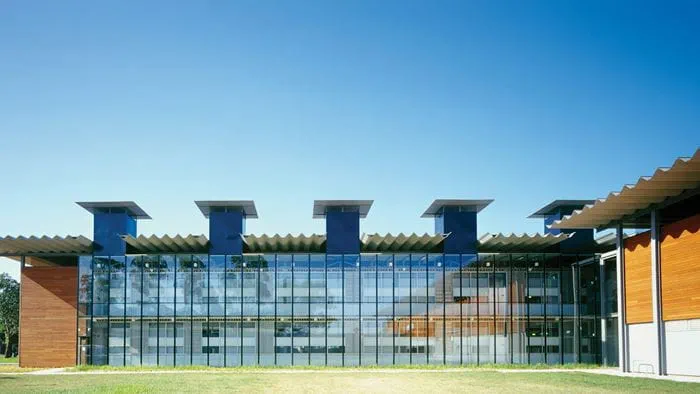After a year’s postponement due to the COVID-19, the World Expo 2020 Dubai was held from 1 October 2021 to 31 March 2022. Echoing with the Expo’s theme ‘Connecting Minds, Creating the Future’, the Japan Pavilion showcased the concept of ‘Where ideas meet’ through architecture and exhibition, including the uniquely designed façade and water feature at the entrance.
Working closely throughout the project, Arup’s Tokyo and Dubai offices provided multidisciplinary services covering structural, mechanical, electrical and public health engineering, façade, fire consulting and site supervision.
The Japan Pavilion proved popular during the event and won the Gold Award in the Exhibition Design category for large pavilions.
The striking façade shows different expressions from different angles.
The main façade of the Japan pavilion, named ‘Kumiko Façade’, was inspired by the similarities between the traditional arabesque and the ‘Asa no Ha’ (hemp leaf) patterns of the Middle East and Japan respectively, reflecting the possible legacy of the Silk Road’s cultural links.
Façades that allow wind and light to penetrate
To create an open space for the queue area outside the pavilion, we proposed a freestanding façade by using a folded shape for the flat pattern. This shape reduced the number of members as compared to a normal three-dimensional truss, while helping minimise the size of the joints where the primary members of the façade and the membrane-supporting secondary members are connected.
With small pieces of triangular-shaped membranes scattered throughout, the façade also functions as a filter that allows light and wind to gently penetrate. One of the design challenges was to enable the membranes to waver in the wind. Working with the supplier, we were able to create dynamic membranes by combining a spring with a rope that supports the membranes while maintaining an appropriate level of tension.
Additionally, our structural and fire engineers conducted fire simulations at an early stage to ensure safety and achieve a sensitive façade without fireproof cladding.
We created a VR model using 3D-CAD tools and worked with the architect on the final validation.
The membranes are made of a fluoropolymer membrane material that turns from beige to a stable white colour under UV light, and we determined the layout by taking into account the way light enters the building. In addition, we worked with the architect prior to construction to conduct final verification using VR with 3D-CAD tools.
Water feature
The architect took reference from different interpretations of water to design the water feature. In Japan, the abundance of water is related to beautiful seasons and can also be a threat, whereas in the Middle East, water resources are scarce and serve as an object of admiration, as represented by oases. In light of this, the water feature was installed at the front of the building as a symbol of both cultures.
The water feature also brings environmental benefits. With wind flowing over the top of the basin, it helps lower the temperature of the passing air through heat exchange and evaporative cooling and allows cool breezes to enter the semi-outdoor space. In addition, the semi-outdoor space is shielded from the sun by the façade, and the airflow created by the giant fan mounted atop is used to moderate the thermal environment.

Awards
Exhibition Design category for large pavilions: Gold Award
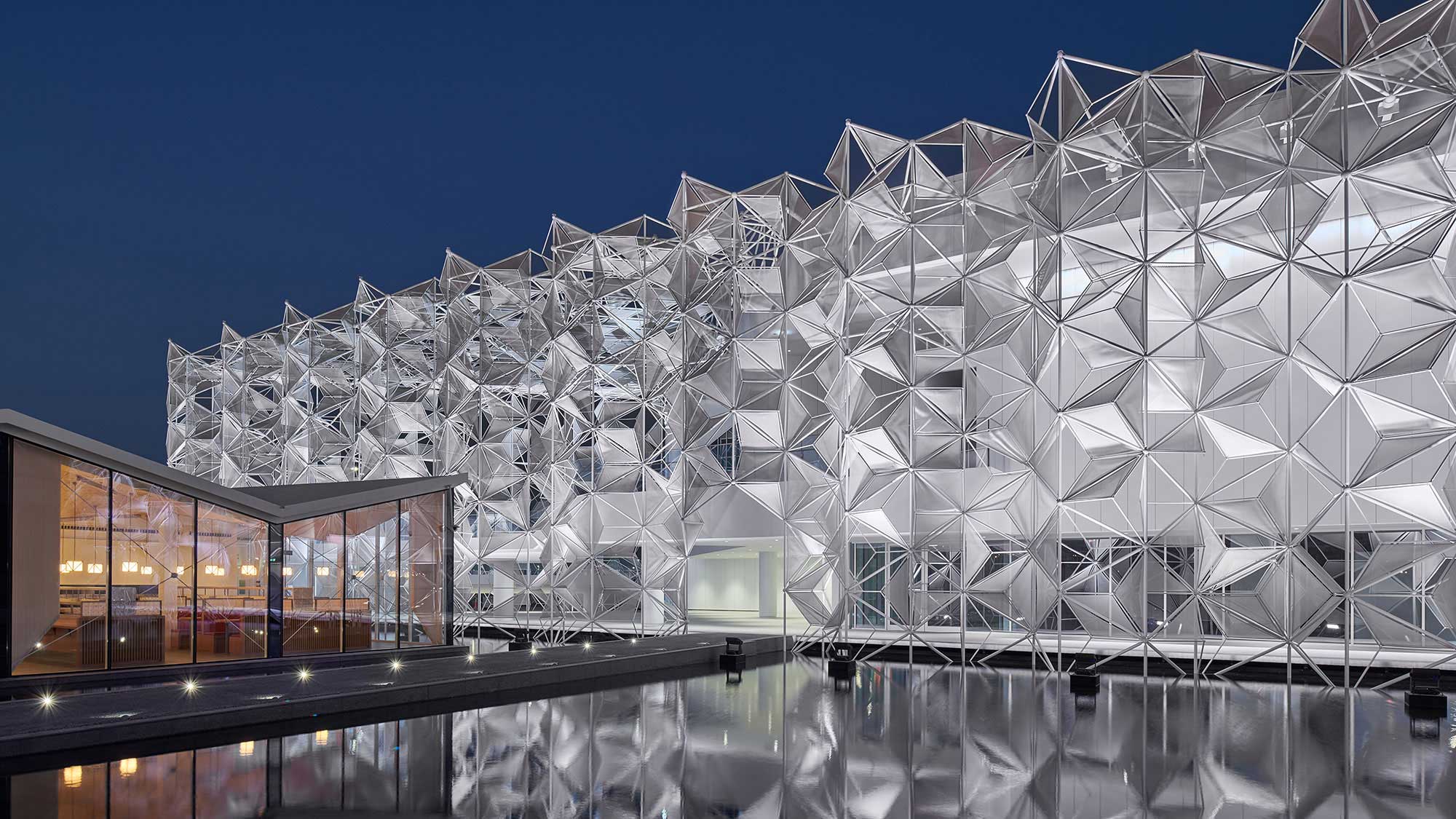 ;
;
